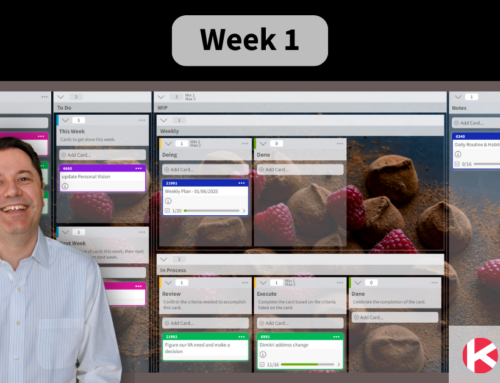
Workplace communication is one of the most important aspects of a successful organization. It is one of the many factors that keep daily operations going. Without proper communication at work, team members and leaders won’t be able to properly handle business processes and it can even jeopardize relationships and workflows within your business. This is why it’s important that the members of your organization understand the different types of workplace communication and why they are vital to your success as a team. Here are the four different communication methods in the workplace along with their importance.
1. Verbal
Verbal communication pertains to the transfer of information through spoken words or sign language. It is the most common type of communication and is often used as it is the most efficient method of passing information from one person or group of people and vice versa. It can be used in both formal and informal settings, making it a very useful means of workplace communication.
But as useful as it is, verbal communication should still be done with the utmost care. It can easily help team leaders build rapport and motivate their team members, but if not used properly, verbal communication can cause misunderstandings or even put a dent in the harmonious relationship that team members have. To make the most use of your verbal communication, see to it that you do the following:
- Think before you talk. Everything you say and the way you act while you say it can have an impact on how you talk. It’s easy to just spurt out words and if you don’t think about the impact of what you say, you can damage your relationship with the people around you.
- Be professional when talking about work. When discussing things about work, it’s important that you act professionally and deal with your workmates with the right attitude. Speak clearly and confidently. This way, you will be taken seriously and you get to more effectively deliver your message across.
- Listen attentively. Verbal communication goes two ways. Apart from speaking, you should also be attentive to what the person or people you are talking to is saying. See to it that you also understand how they respond to what you say.
2. Nonverbal
Apart from sharing information through spoken words, you can also communicate with the people around you through various nonverbal cues. These can come in different forms and go along with your use of verbal communication. The way you use nonverbal with your verbal communication can have an impact on how people receive the information you are sharing. Nonverbal communication includes:
- Hand gestures
- Posture
- Facial expression
- Body language
- Intonation
- Eye contact
All of these nonverbal cues are essential because if used properly, they can make any workplace communication more effective. They can help you express your message better, in a more confident and professional manner. To make sure that you are using nonverbal cues properly, here are some tips:
- Be more conscious of your actions. We don’t often notice how we act or move whenever we talk. But in the workplace, the way you move or react along with how you talk can affect the way you deliver your message. If you fidget a lot or slouch, other people will think that you are not confident with whatever you are saying. Your facial expression can also impact how your workmates perceive your message. So depending on what message you would like to convey, see to it that your actions are in tune with what you are trying to say.
- Maintain regular eye contact to express sincerity. One thing that can create a bigger impact when talking to someone is eye contact. Even just the idea of saying hello to someone, maintaining eye contact versus no eye contact at all can make such a huge difference. Eye contact is a sign of sincerity. So if you want to be taken seriously and to gain the respect of your workmates, see to it that you maintain a healthy amount of eye contact when you are talking to one or more people.
- Stand straight when talking in front of a large group of people. Another way to exude confidence when communicating with your workmates is by maintaining a good posture and standing straight, especially when talking to a large group of people. Public speaking is a form of communication that combines both verbal and nonverbal communication to be able to deliver a message to a large group of people. To make it effective, the way you move and the way you carry yourself matters.
3. Written
From chats and text messages to emails and paper documents, written communication is another widely used form of workplace communication due to a number of reasons. One of these reasons is because written communication provides proof that specific communication between two or more parties just occurred. It also serves as a reference that allows involved parties to review as long as they have access to the said written communications.
In fact, this is one reason why most official business communications and documents are written, as it allows everyone in the office to go back to these records anytime they need to. Office memos, emails, pamphlets, and others are official workplace communications that are always available in written form, be it in print or in electronic form.
4. Visual
Another way to deliver information is through the use of visual elements such as drawings, photos, arts, charts, graphs and more. Most of the time, visual communication is used along with verbal and nonverbal communication. To optimize the way you use your visual communication, it’s ideal to make use of visual elements that are pleasing or cooling to the eye. Visual communication should also make it easy for the message recipients to digest the overall content of your message in a short amount of time. This is also one reason why infographics, charts and bar graphs are very essential for presentations, marketing emails and other business communications as they can help make it easier for message recipients to understand the content of a message as there will be no need to read long blocks of text.
More Effective Workplace Communication with Kanban
Nowadays, many types of communication tools and collaboration apps have become available, which combine various all workplace communication methods, making it a lot easier for team leaders and team members to work together, whether they are in an office or remote work setting. Collaboration tools such as Kanban can be very helpful in improving your workplace communication as this tool allows you to use both written and visual communication to keep track of your tasks and monitor the productivity of each member of your team.
If you are thinking about incorporating Kanban into your workplace communication and collaboration tools, you can check out Kanban Zone. This online Kanban board can help you connect better with your team, focus on tasks that matter and overall, enhance your collaboration with the members of your organization.
Learn to Work Smarter, Not Harder!
Get our top articles weekly.
Table Of Contents
Discover many more posts…







